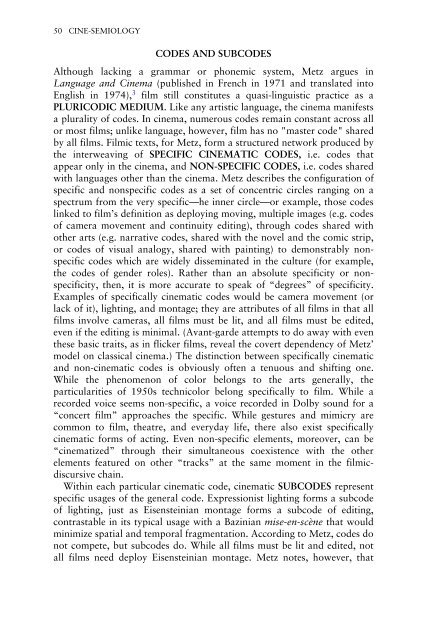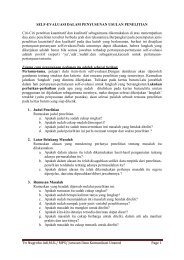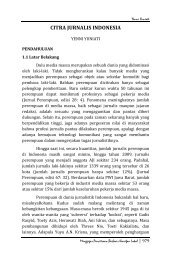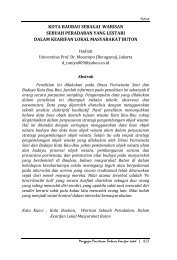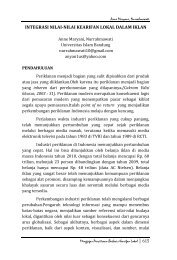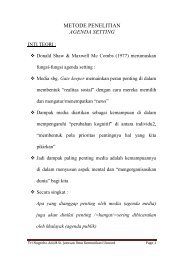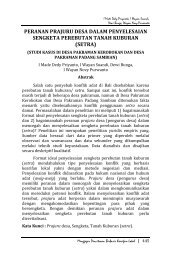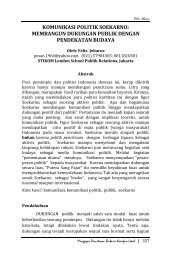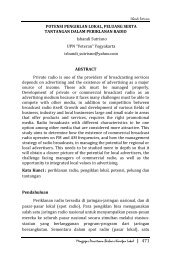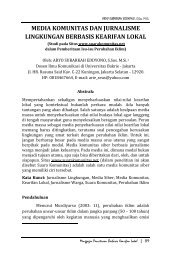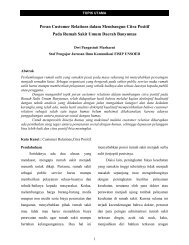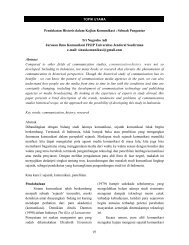New Vocabularies in Film Semiotics
New Vocabularies in Film Semiotics
New Vocabularies in Film Semiotics
Create successful ePaper yourself
Turn your PDF publications into a flip-book with our unique Google optimized e-Paper software.
50 CINE-SEMIOLOGY<br />
CODES AND SUBCODES<br />
Although lack<strong>in</strong>g a grammar or phonemic system, Metz argues <strong>in</strong><br />
Language and C<strong>in</strong>ema (published <strong>in</strong> French <strong>in</strong> 1971 and translated <strong>in</strong>to<br />
English <strong>in</strong> 1974), 3 film still constitutes a quasi-l<strong>in</strong>guistic practice as a<br />
PLURICODIC MEDIUM. Like any artistic language, the c<strong>in</strong>ema manifests<br />
a plurality of codes. In c<strong>in</strong>ema, numerous codes rema<strong>in</strong> constant across all<br />
or most films; unlike language, however, film has no "master code" shared<br />
by all films. <strong>Film</strong>ic texts, for Metz, form a structured network produced by<br />
the <strong>in</strong>terweav<strong>in</strong>g of SPECIFIC CINEMATIC CODES, i.e. codes that<br />
appear only <strong>in</strong> the c<strong>in</strong>ema, and NON-SPECIFIC CODES, i.e. codes shared<br />
with languages other than the c<strong>in</strong>ema. Metz describes the configuration of<br />
specific and nonspecific codes as a set of concentric circles rang<strong>in</strong>g on a<br />
spectrum from the very specific—he <strong>in</strong>ner circle—or example, those codes<br />
l<strong>in</strong>ked to film’s def<strong>in</strong>ition as deploy<strong>in</strong>g mov<strong>in</strong>g, multiple images (e.g. codes<br />
of camera movement and cont<strong>in</strong>uity edit<strong>in</strong>g), through codes shared with<br />
other arts (e.g. narrative codes, shared with the novel and the comic strip,<br />
or codes of visual analogy, shared with pa<strong>in</strong>t<strong>in</strong>g) to demonstrably nonspecific<br />
codes which are widely dissem<strong>in</strong>ated <strong>in</strong> the culture (for example,<br />
the codes of gender roles). Rather than an absolute specificity or nonspecificity,<br />
then, it is more accurate to speak of “degrees” of specificity.<br />
Examples of specifically c<strong>in</strong>ematic codes would be camera movement (or<br />
lack of it), light<strong>in</strong>g, and montage; they are attributes of all films <strong>in</strong> that all<br />
films <strong>in</strong>volve cameras, all films must be lit, and all films must be edited,<br />
even if the edit<strong>in</strong>g is m<strong>in</strong>imal. (Avant-garde attempts to do away with even<br />
these basic traits, as <strong>in</strong> flicker films, reveal the covert dependency of Metz’<br />
model on classical c<strong>in</strong>ema.) The dist<strong>in</strong>ction between specifically c<strong>in</strong>ematic<br />
and non-c<strong>in</strong>ematic codes is obviously often a tenuous and shift<strong>in</strong>g one.<br />
While the phenomenon of color belongs to the arts generally, the<br />
particularities of 1950s technicolor belong specifically to film. While a<br />
recorded voice seems non-specific, a voice recorded <strong>in</strong> Dolby sound for a<br />
“concert film” approaches the specific. While gestures and mimicry are<br />
common to film, theatre, and everyday life, there also exist specifically<br />
c<strong>in</strong>ematic forms of act<strong>in</strong>g. Even non-specific elements, moreover, can be<br />
“c<strong>in</strong>ematized” through their simultaneous coexistence with the other<br />
elements featured on other “tracks” at the same moment <strong>in</strong> the filmicdiscursive<br />
cha<strong>in</strong>.<br />
With<strong>in</strong> each particular c<strong>in</strong>ematic code, c<strong>in</strong>ematic SUBCODES represent<br />
specific usages of the general code. Expressionist light<strong>in</strong>g forms a subcode<br />
of light<strong>in</strong>g, just as Eisenste<strong>in</strong>ian montage forms a subcode of edit<strong>in</strong>g,<br />
contrastable <strong>in</strong> its typical usage with a Baz<strong>in</strong>ian mise-en-scène that would<br />
m<strong>in</strong>imize spatial and temporal fragmentation. Accord<strong>in</strong>g to Metz, codes do<br />
not compete, but subcodes do. While all films must be lit and edited, not<br />
all films need deploy Eisenste<strong>in</strong>ian montage. Metz notes, however, that


